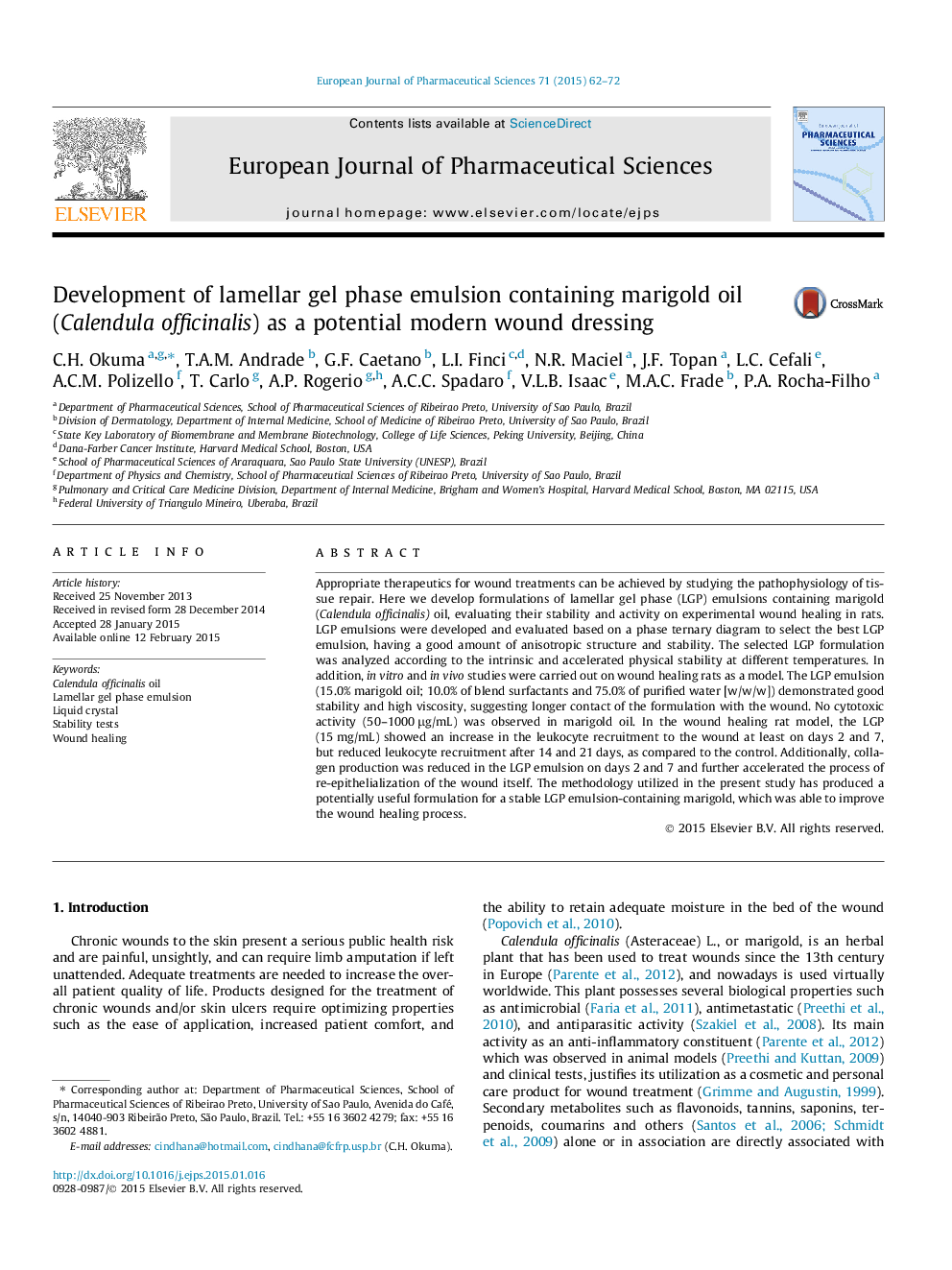| Article ID | Journal | Published Year | Pages | File Type |
|---|---|---|---|---|
| 2480312 | European Journal of Pharmaceutical Sciences | 2015 | 11 Pages |
Appropriate therapeutics for wound treatments can be achieved by studying the pathophysiology of tissue repair. Here we develop formulations of lamellar gel phase (LGP) emulsions containing marigold (Calendula officinalis) oil, evaluating their stability and activity on experimental wound healing in rats. LGP emulsions were developed and evaluated based on a phase ternary diagram to select the best LGP emulsion, having a good amount of anisotropic structure and stability. The selected LGP formulation was analyzed according to the intrinsic and accelerated physical stability at different temperatures. In addition, in vitro and in vivo studies were carried out on wound healing rats as a model. The LGP emulsion (15.0% marigold oil; 10.0% of blend surfactants and 75.0% of purified water [w/w/w]) demonstrated good stability and high viscosity, suggesting longer contact of the formulation with the wound. No cytotoxic activity (50–1000 μg/mL) was observed in marigold oil. In the wound healing rat model, the LGP (15 mg/mL) showed an increase in the leukocyte recruitment to the wound at least on days 2 and 7, but reduced leukocyte recruitment after 14 and 21 days, as compared to the control. Additionally, collagen production was reduced in the LGP emulsion on days 2 and 7 and further accelerated the process of re-epithelialization of the wound itself. The methodology utilized in the present study has produced a potentially useful formulation for a stable LGP emulsion-containing marigold, which was able to improve the wound healing process.
Graphical abstractFigure optionsDownload full-size imageDownload high-quality image (148 K)Download as PowerPoint slide
